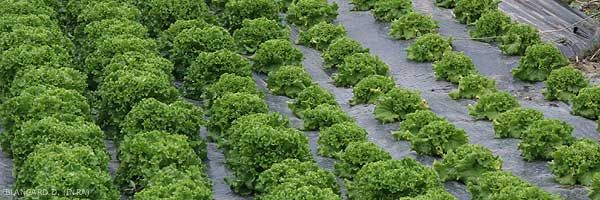
Root asphyxiatia
Water stress manifests itself in several ways in salad crops. They can be very occasional , for example following heavy rains, ruptured irrigation pipes, water more or less submerging a crop or accumulating in areas that form a basin. Plants that have experienced such water stress at their roots often suddenly wilt. Their blade turns more or less yellow and dries up later (Figure 1). When water retention has been prolonged and we are dealing with heavy soil, plants can wilt and necrost completely.
Water stress can be unintentionally repeated in a salad crop. This is the case, for example, when a producer does not control the irrigation of plants well and tends to add too much water to each watering. This succession of root asphyxia also leads to the appearance of the symptoms described above. In this case, they may be preceded by reduced salad growth (Figure 2). Such a situation will also be encountered, but more locally, in certain plots containing areas with heavier soil or in pits.
Salads find it difficult to have their root system completely submerged for a long time. In this situation, he lacks oxygen and is therefore in a state of asphyxiation. It follows a more or less important destruction of the roots, which is at the origin of wilting. This telluric phenomenon would be amplified by the proliferation of anaerobic microorganisms which would contribute to the denaturation of the roots.
In general, significant damage is observed in poorly drained plots with heavy soils and during a period of hot weather which favors anaerobic microorganisms and accelerates plant transpiration and therefore wilting. In plots where asphyxiation takes place, the soil should be drained and the lettuce should be planted on relatively high hills.





